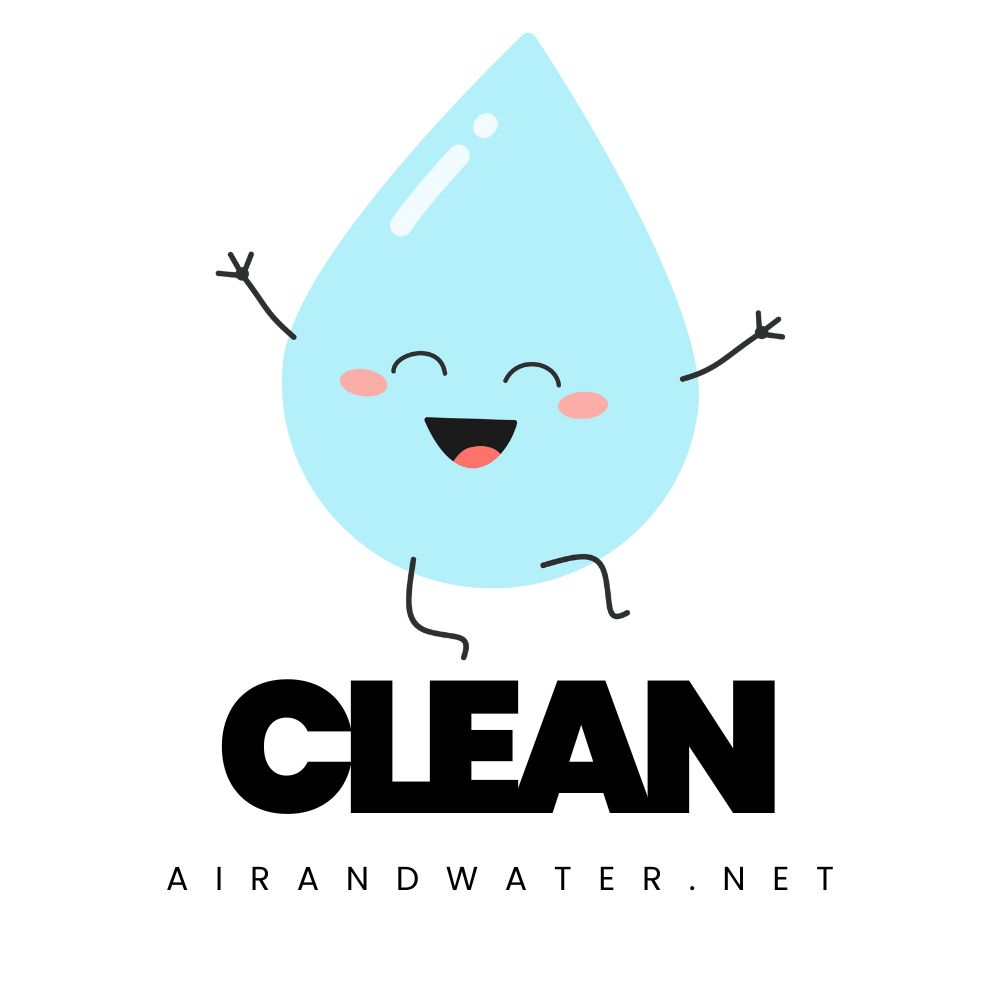Miami Water Quality at a Glance
serious concerns
What Miami Families Should Know
- New EPA PFAS limit is 4 ppt for PFOA and PFOS1 — this is a very small amount, so even low readings now count. Why it matters: Utilities must test and reduce PFAS to meet this standard.
- Historical PFOS readings (not current distribution water): 47 ppt at Miami International Airport (2013) and 58 ppt at Miami Beach (2014)2 — Why it matters: Shows PFAS sources in the area that can reach groundwater and nearby systems.
- PFAS are “forever chemicals” that don’t break down easily — Why it matters: They can build up in people and the environment over time.
- PFAS found in Miami rain3 — Why it matters: Rain can carry PFAS onto land and into water, adding to what plants must remove.
- DBPs (like TTHMs) are present but within legal limits4 — Why it matters: These are byproducts of disinfection; staying under limits is important for long-term health.
If you’re looking for options, this certified filter meets the new EPA standards for PFAS and other common contaminants.
⚠️ Critical Concerns for Miami Residents
- PFAS “Forever Chemicals”: Historical PFOS readings (not current distribution water) were 47 ppt (Miami International Airport, 2013) and 58 ppt (Miami Beach, 2014)2
- Disinfection Byproducts: Trihalomethanes detected but under the 80 ppb legal limit in Miami-Dade CCR data4
- Rainwater Contamination: Miami studies detected 21 PFAS compounds in rain3
- Biscayne Bay: PFAS have been measured in surface waters; research is ongoing on wildlife exposure8
Read the full report below for detailed analysis, neighborhood-specific data, and actionable recommendations for Miami residents.
Miami – Florida – Water Quality Report 2025: PFAS Contamination, Infrastructure Concerns & Critical Safety Issues across your city
Miami-Dade Water and Sewer Department (WASD) is one of the largest public utilities in the United States, serving approximately 2.4 million residents across Miami and surrounding areas in Miami-Dade County. The system operates three major water treatment plants, manages over 8,500 miles of water mains, and delivers an average of 300 million gallons of water daily to this dynamic coastal metropolis.
Unlike most American cities, Miami draws nearly all of its drinking water from the Biscayne Aquifer, a shallow groundwater system that lies just below the surface throughout southeastern Florida. This formation provides naturally filtered water but is vulnerable to contamination from surface activities, PFAS pollution, and saltwater intrusion. With average annual rainfall of roughly 60 inches, the aquifer is regularly recharged but faces growing challenges from sea level rise, extreme weather, and persistent chemicals. Miami has committed to a multi-year Capital Improvement Program totaling $8.79 billion7 to upgrade infrastructure and strengthen resilience.
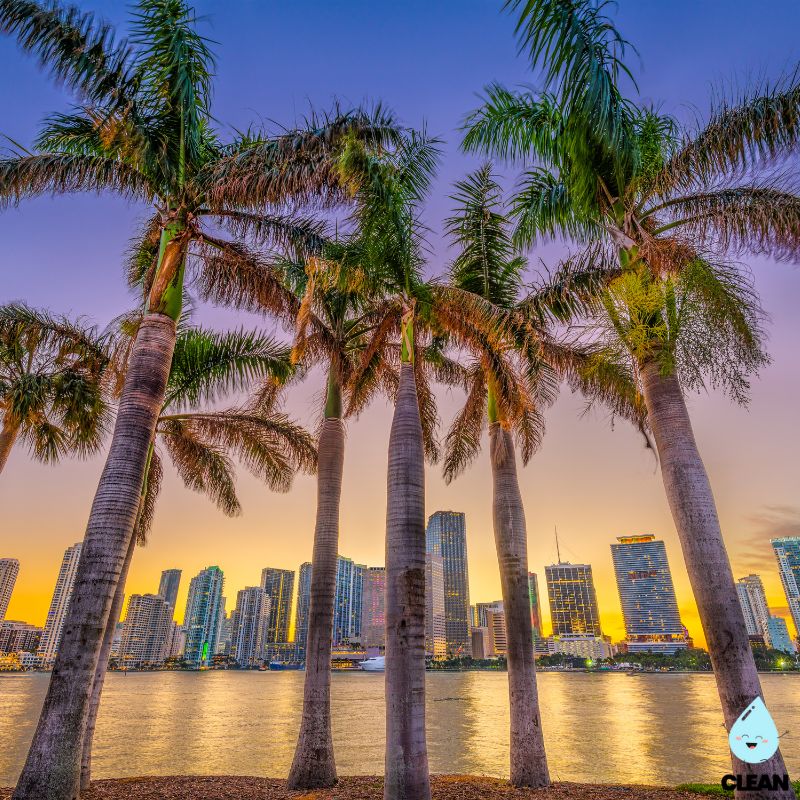
Miami Water Quality: Current Status & Contamination Concerns (2024-2025)
Latest Testing Results & Compliance
- Federal Compliance: Miami’s water meets current federal and state standards for regulated contaminants. Utilities now must also meet the EPA’s new PFAS limits of 4 ppt for PFOA/PFOS1.
- Testing Scope: WASD reports more than 150,000 samples and tests annually across plants, the distribution system, and customer taps6.
- Emerging Contaminants: PFAS are not fully removed by conventional treatment; new standards require utilities to reduce levels where averages exceed limits1.
PFAS Findings in and around Miami
- Historical PFOS readings (not current distribution water): 47 ppt at Miami International Airport (2013) and 58 ppt at Miami Beach (2014)2.
- Rain contribution: Miami-Dade rain samples detected 21 PFAS compounds in a recent study3.
- Marine waters: PFAS have been measured in Biscayne Bay and connected waters; research is ongoing on wildlife exposure8.
Chemical Byproducts from Disinfection
- DBPs: Miami-Dade CCR data show total trihalomethanes (TTHMs) present but under the 80 ppb legal limit (e.g., system averages in the ~57 ppb range in 2023 community reports)4.
Infrastructure Modernization Efforts
- Record Investment: In FY 2023–24, WASD executed $622 million in capital upgrades as part of its multi-year program6.
- Multi-year plan: The total Capital Improvement Program is $8.79 billion for water and wastewater system upgrades7.
- Treatment limits: Existing plants use conventional treatment and were not designed to remove PFAS; home filtration can reduce exposure at the tap1.
Climate Resilience & Contamination Challenges
The shallow Biscayne Aquifer is sensitive to surface contamination and saltwater intrusion. PFAS can arrive from local sources and even via rainfall, and persist in water and wildlife. Planning now must account for both sea-level rise and long-lasting chemicals that conventional treatment does not fully remove3.
Critical Recommendations for Miami Residents
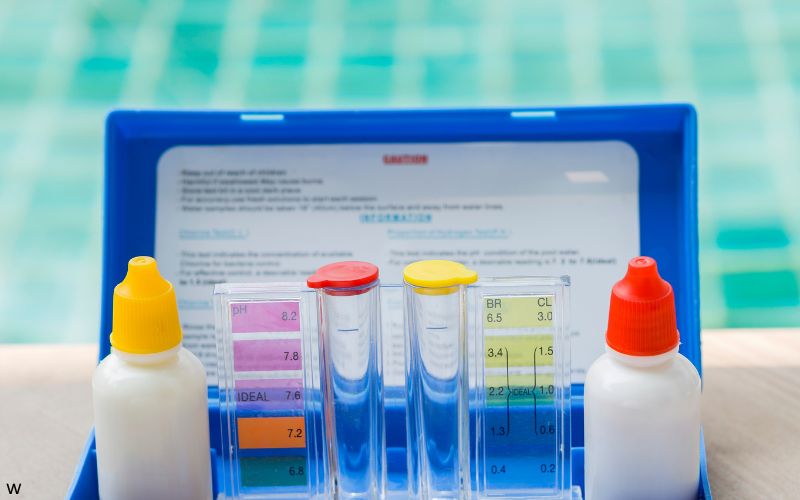
Request PFAS Testing
Contact Miami-Dade WASD at 311 or (305) 468-5900 to ask about PFAS testing and results. Request the most recent PFAS monitoring results and the utility’s planned compliance steps under the 4 ppt EPA rule for PFOA/PFOS1.
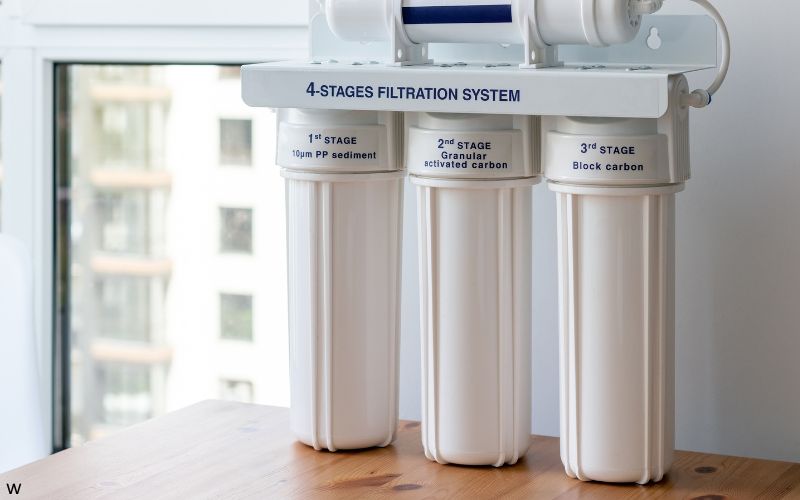
Install PFAS-Certified Filtration
Choose systems certified for PFOA/PFOS reduction (and other common contaminants). This adds a household layer of protection while utilities upgrade treatment1. If you’re looking for options, this certified filter meets the new EPA standards for PFAS and other common contaminants.

Monitor Health Guidance
Stay current with EPA and local updates. Extra caution is sensible for pregnancy and young children, who are more sensitive to contaminants1.
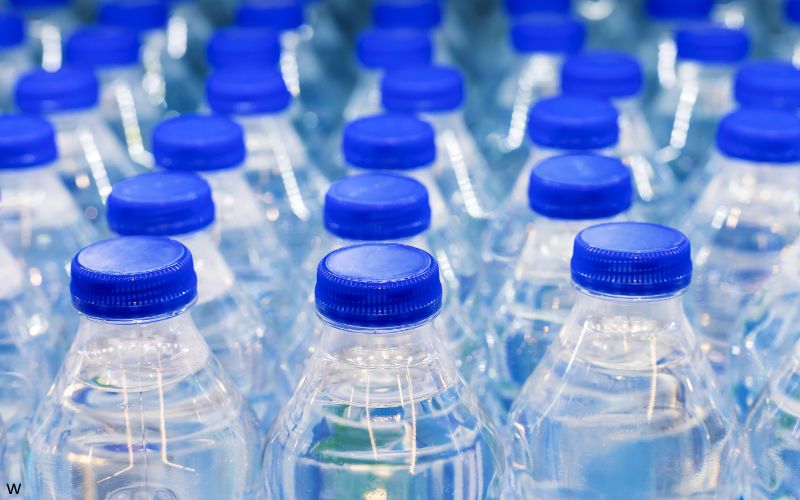
Advocate for Treatment Upgrades
Ask county leaders for advanced PFAS treatment at plants. This complements home filters and protects all neighborhoods system-wide1.

Report Water Concerns
If you notice unusual taste, odor, or color, report via the Miami 311 app or by calling 311 and request follow-up testing.
Quality News About Your Water
Get the comprehensive water quality news coverage you need with our dedicated US Water News Service. From coast to coast, we deliver in-depth reporting and expert analysis on PFAS contamination, EPA regulatory changes, infrastructure developments, and emerging water safety issues affecting communities nationwide. While mainstream media only covers the biggest stories, we provide the detailed, ongoing coverage that helps you understand the full scope of America’s water challenges. Whether you’re a concerned citizen, water professional, or community leader, our daily updates and analytical insights keep you informed about the issues that matter most to public health and environmental safety.
Frequently Asked Questions
Is Miami’s tap water safe to drink given PFAS?
Miami’s water meets current federal standards. The EPA now requires utilities to meet 4 ppt limits for PFOA and PFOS; local historical readings show PFAS sources in the area (e.g., 47 ppt at Miami International Airport in 2013; 58 ppt at Miami Beach in 2014)12. A good home filter adds protection while WASD implements PFAS plans to meet federal standards.
DBPs (like TTHMs) are present but under legal limits per CCR data4.
For families with pregnancy or infants, consider certified filtration for extra peace of mind1.
What is Miami doing about PFAS?
WASD is executing a $8.79 billion multi-year program and invested a record $622 million in FY 2023–24. Plants use conventional treatment today; additional PFAS-targeted processes will be needed to meet new standards671.
Residents can support: ask for public updates on PFAS testing and treatment plans, and use certified filters at home in the meantime.
What health risks are discussed with PFAS?
EPA notes links between certain PFAS and health effects at low levels over time; that’s why the new drinking water limits are set very low (4 ppt for PFOA/PFOS)1. Reducing exposure is the goal of both utility upgrades and household filtration.
Key Contaminants Found in Miami’s Water (2023–2024 Testing)
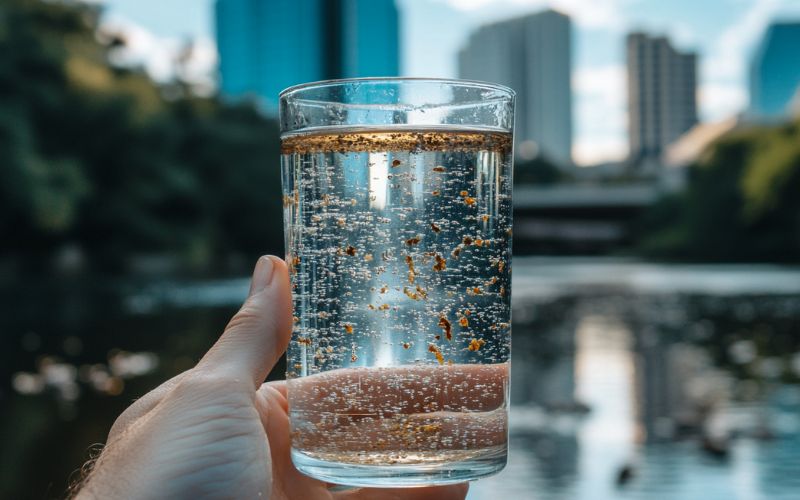
PFAS “Forever Chemicals”
Source: Firefighting foam use near airports, industrial activities, and atmospheric deposition23.
Current Readings: Local historical PFOS highs include 47 ppt (MIA, 2013) and 58 ppt (Miami Beach, 2014) — not current distribution water2. EPA’s enforceable limit is 4 ppt for PFOS/PFOA1.
Why it matters: These levels exceed today’s legal limit and point to nearby sources; certified filtration at home reduces exposure while utility upgrades scale up1.
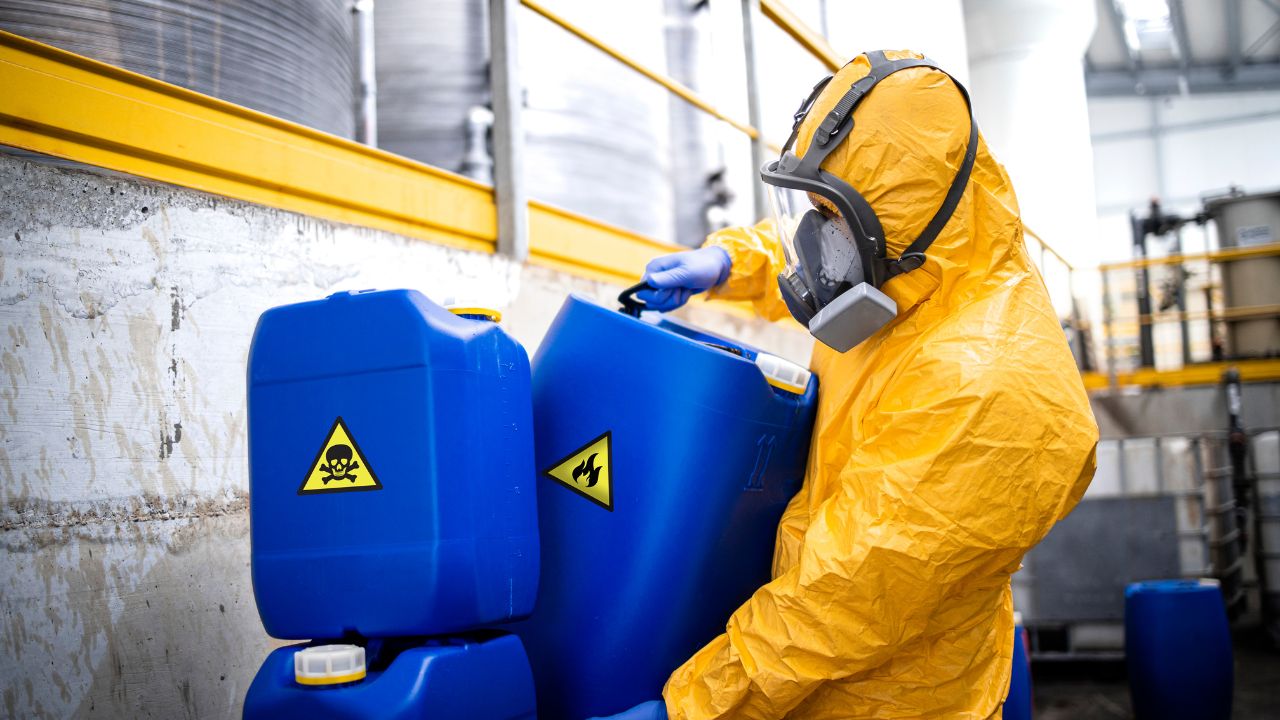
Chromium-6 (Hexavalent Chromium)
Source: Can occur naturally and from certain industrial activities. Miami-Dade CCRs report total chromium within legal limits; hexavalent chromium is not reported as a separate regulated contaminant in the CCR4.
Why it matters: Total chromium is monitored and compliant. If hexavalent chromium is a concern for your household, point-of-use filtration can add extra protection while utilities follow federal guidance.
Please read – our information
The information presented on cleanairandwater.net is compiled from official water quality reports, trusted news sources, government websites, and public health resources. While we strive for accuracy and thoroughness in our presentations, we are not scientists, engineers, or qualified water quality professionals.
Our mission is to present water quality information in an accessible, real-world format that helps people understand what’s in their water and make informed decisions about their health and safety. We believe that complex environmental information should be available to everyone in a format that’s easy to understand.
We make every effort to ensure our content is current and accurate, but we cannot guarantee that all information is complete or error-free. This website should not replace official communications from your local water utility or health department. We always recommend consulting official sources for the most up-to-date information regarding your specific water system.
Clean Air and Water is not liable for any unintentional errors, omissions, or outdated information. The content on this site is provided for informational purposes only and should not be considered professional advice.
